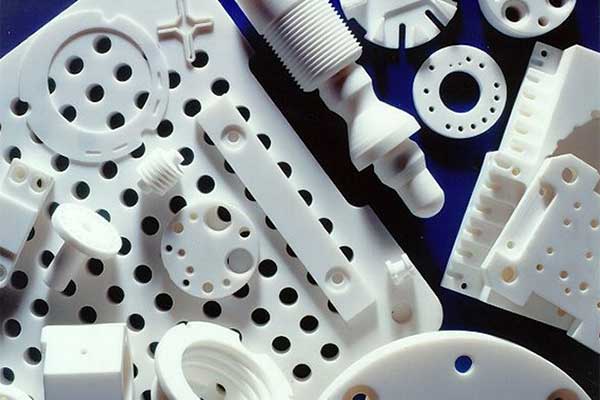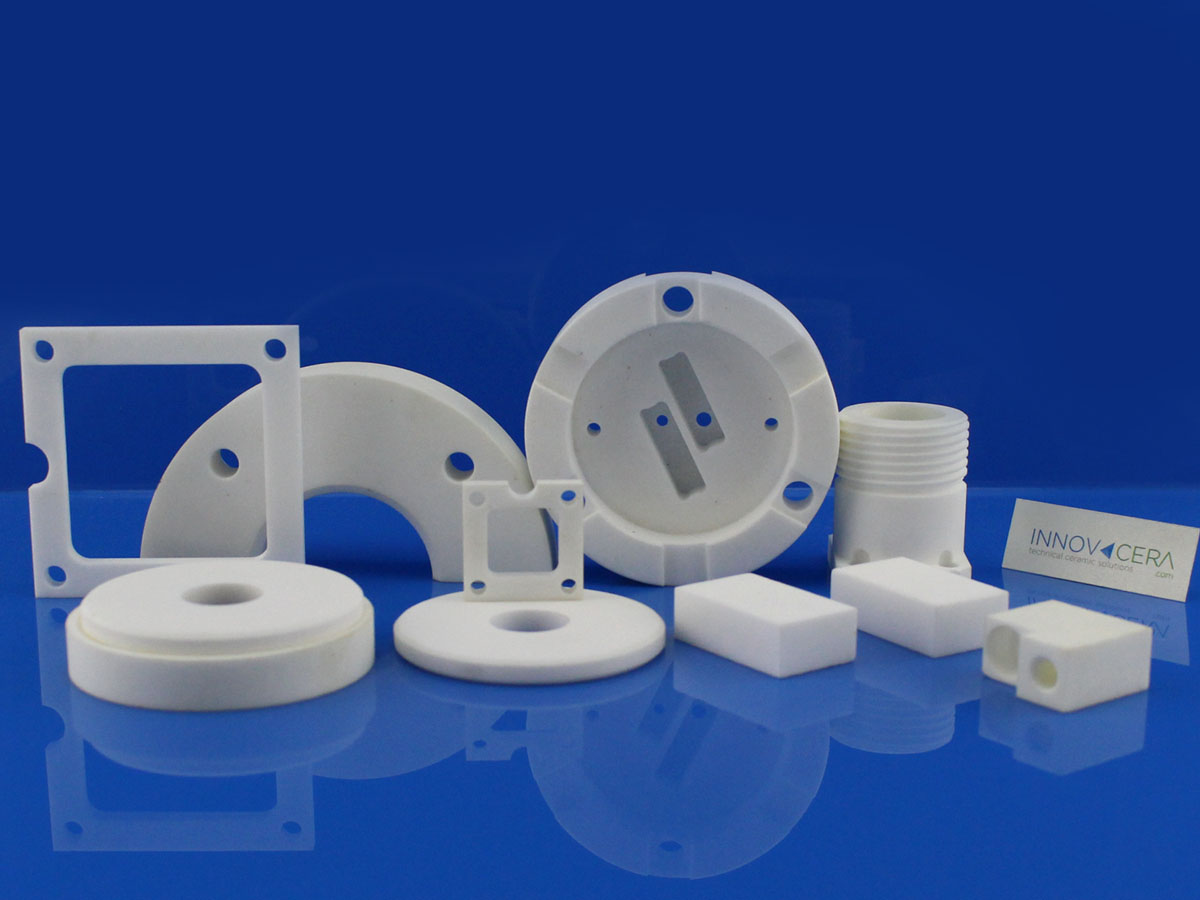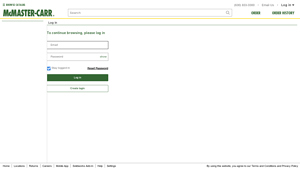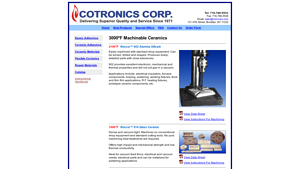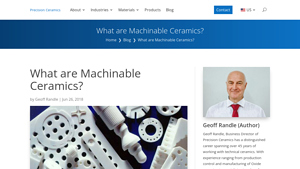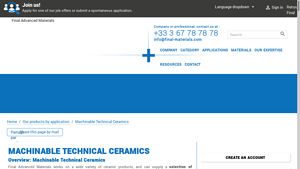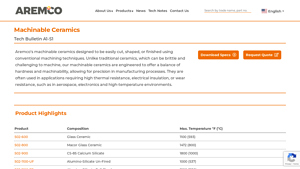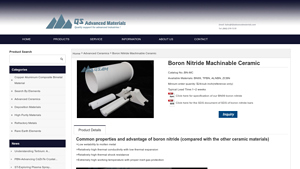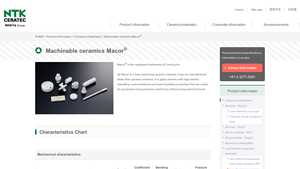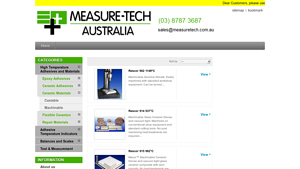Machinable Ceramics Guide: Type, Cost, Top List…
Introduction: Navigating the Global Market for machinable ceramics
Navigating the intricacies of the global market for machinable ceramics can be daunting for international B2B buyers, especially when faced with challenges such as sourcing high-performance materials that meet specific production requirements. Machinable ceramics offer a versatile solution, combining essential properties like thermal resistance, wear durability, and electrical insulation while being easy to machine with standard tools. This guide delves deep into the world of machinable ceramics, covering various types, their diverse applications, and critical aspects of supplier vetting.
With a focus on practical considerations such as cost-effectiveness and material specifications, this resource equips buyers from Africa, South America, the Middle East, and Europe—especially markets like Germany and Vietnam—with the knowledge needed to make informed purchasing decisions. Learn how to identify high-quality suppliers, assess the technical properties of different ceramic types, and gain insights into the latest trends influencing the industry. By synthesizing these elements, our guide aims to empower you to not only enhance your procurement strategy but also foster long-lasting partnerships with trustworthy manufacturers. Get ready to explore the vast opportunities within the realm of machinable ceramics, unlocking their potential for your business needs.
Understanding machinable ceramics Types and Variations
| Type Name | Key Distinguishing Features | Primary B2B Applications | Brief Pros & Cons for Buyers |
|---|---|---|---|
| Rescor™ 902 Alumina Silicate | Excellent mechanical, thermal, and electronic properties; machines easily with standard tools. | Electrical insulators, furnace components, welding fixtures | Pros: High precision, low outgassing; Cons: Limited temperature range (up to 3000°F). |
| Rescor™ 914 Glass Ceramic | Dense and vacuum-tight, with high impact strength; no post-machining heat treatment required. | Vacuum feed throughs, electrical parts, soldering applications | Pros: Strong mechanical properties; Cons: Lower thermal conductivity. |
| Rescor™ 915 Macor™ Glass Ceramic | Zero porosity, highly versatile for conventional machining without heat treatments. | Medical devices, high-frequency insulators | Pros: Excellent dielectric strength; Cons: More expensive than traditional ceramics. |
| Rescor™ 960 Alumina | High-purity alumina suitable for a range of industries, can be machined easily using conventional methods. | Electrical, electronic, and metallurgical industries | Pros: Excellent chemical and thermal properties; Cons: Higher initial costs. |
| Rescor™ 310M Fused Silica Foam | Composed of over 99% pure fused silica, notable for high thermal resistance and low density. | Thermal barriers, crucibles, high-temperature insulation | Pros: Exceptional thermal shock resistance; Cons: Limited in structural rigidity. |
What are the Unique Characteristics of Rescor™ 902 Alumina Silicate?
Rescor™ 902 Alumina Silicate stands out for its ability to be machined with standard shop equipment without the need for special tools. Its notable mechanical, thermal, and electronic properties make it suitable for a wide range of applications, from electrical insulators to furnace components. The capability to produce sharp, detailed parts with close tolerances makes it ideal for prototyping. However, it’s essential for buyers to recognize its temperature limitations (up to 3000°F) to ensure it fits specific application requirements.
How Does Rescor™ 914 Glass Ceramic Perform in Critical Applications?
Rescor™ 914 Glass Ceramic is favored for its high density and vacuum-tight nature, making it suitable for applications where air tightness and low thermal conductivity are essential. Its capacity to withstand high impacts and mechanical stresses without requiring post-machining heat treatments simplifies production processes. This adaptability is crucial for B2B buyers focused on minimizing operational costs while maintaining product quality. Nevertheless, its thermal conductivity can limit its use in high-heat applications.
What Advantages Does Rescor™ 915 Macor™ Glass Ceramic Offer?
Rescor™ 915 Macor™ Glass Ceramic is particularly valued in industries that require high dielectric strengths and chemical resistance, such as medical and high-frequency electrical applications. Its zero porosity prevents outgassing and ensures reliability in delicate environments. This material’s ease of machining and versatility for various applications make it a powerful choice for companies needing precision components. However, buyers should weigh its cost against operational necessities, especially in budget-sensitive projects.
Why Choose Rescor™ 960 Alumina for Electrical Applications?
Rescor™ 960 Alumina is synonymous with high purity and dependable performance across various industries, especially in electrical and metallurgical sectors. Its excellent corrosion resistance and thermal stability allow it to maintain functionality in challenging environments. The ease of machining this material using conventional methods can reduce project timelines significantly. However, potential buyers should be prepared for higher upfront costs, which can be a critical factor in economic feasibility studies.
What Makes Rescor™ 310M Fused Silica Foam Ideal for High-Performance Needs?
Rescor™ 310M Fused Silica Foam is notable for its high thermal shock resistance and low thermal expansion, which are crucial in applications like thermal barriers and crucibles. Its versatility allows cutting and drilling using common shop tools, making it accessible for manufacturers looking to produce lightweight yet effective supporting materials. While its exceptional thermal properties are advantageous, buyers should keep in mind that it may lack structural rigidity for some applications.
Key Industrial Applications of machinable ceramics
| Industry/Sector | Specific Application of Machinable Ceramics | Value/Benefit for the Business | Key Sourcing Considerations for this Application |
|---|---|---|---|
| Electrical & Electronics | High-Temperature Electrical Insulators | Provides robust insulation in high-frequency applications, increasing device longevity. | Sourcing quality materials with specified dielectric strength and thermal resistance. |
| Aerospace | Precision Components for Avionic Systems | Ensures safety and performance under extreme conditions, reducing maintenance costs. | Compliance with aerospace standards and certifications; rigorous testing requirements. |
| Medical Devices | Diagnostic and Surgical Instrumentation Components | Offers biocompatibility and precision, enhancing patient safety and treatment efficacy. | Validation of material properties; assurance of sterility and chemical resistance. |
| Manufacturing | Tooling for Various Machining Operations | Improves productivity with durable tools that resist wear and temperature fluctuations. | Availability of custom parts; suppliers with expertise in specific manufacturing processes. |
| Automotive | Engine Parts and Sensors | Enhances engine performance while reducing weight and improving fuel efficiency. | Need for high-performance materials; competitive pricing for bulk orders. |
How Are Machinable Ceramics Used in the Electrical & Electronics Industry?
Machinable ceramics are pivotal in the electrical and electronics industry, particularly for high-temperature electrical insulators. These components offer excellent dielectric properties that prevent short-circuits in delicate electronic devices. For international buyers, especially from Africa, South America, the Middle East, and Europe, the critical requirement is sourcing ceramics that match precise specifications in dielectric strength and thermal resistance, ensuring optimal performance under varying conditions.
What Role Do Machinable Ceramics Play in Aerospace Applications?
In aerospace, machinable ceramics are essential for creating precision components that withstand extreme temperature conditions and mechanical stresses. These materials ensure enhanced safety and performance in avionic systems, significantly reducing maintenance costs over the lifecycle of aircraft. International buyers must prioritize sourcing from suppliers who meet stringent aerospace standards and provide rigorous testing documentation, ensuring reliability and compliance with industry regulations.
How Are Machinable Ceramics Beneficial to Medical Devices?
In the medical sector, machinable ceramics are commonly utilized for manufacturing diagnostic and surgical instrumentation components. Their biocompatibility and precision manufacturing capabilities enhance patient safety and improve treatment outcomes. Buyers in this field must ensure that the sourced ceramics meet specific health and safety regulations, including validations for sterility and chemical resistance to prevent any compromise in patient care.
Why Are Machinable Ceramics Important in Manufacturing Tooling?
Machinable ceramics serve a significant role in manufacturing as they are utilized for tooling in various machining operations. These durable tools offer resistance to wear and thermal fluctuations, resulting in enhanced productivity and reduced downtime. For businesses looking to source tooling solutions, it’s critical to work with suppliers that can provide custom parts tailored to specific manufacturing processes while ensuring competitive pricing for bulk orders.
What Are the Advantages of Using Machinable Ceramics in Automotive Components?
In the automotive industry, machinable ceramics are used for engine parts and sensors, contributing to enhanced engine performance and reduced vehicle weight. This translates into better fuel efficiency and lower emissions, aligning with regulatory standards and consumer demands for greener vehicles. Buyers sourcing these materials need to seek suppliers who emphasize high-performance capabilities and can provide cost-effective solutions for bulk manufacturing needs.
3 Common User Pain Points for ‘machinable ceramics’ & Their Solutions
Scenario 1: Difficulty in Achieving Precise Tolerances with Machinable Ceramics
The Problem:
B2B buyers in industries such as aerospace and medical devices often require components made from machinable ceramics that adhere to tight tolerances and precise specifications. However, these buyers can face challenges related to dimensional stability during the machining process. Variations in thickness or material inconsistencies may lead to parts that do not meet the necessary specifications, which subsequently affects assembly and functionality. This situation can result in increased costs due to rework, scrap materials, and project delays.
The Solution:
To achieve the required precision, it is crucial for buyers to partner with suppliers that provide high-quality machinable ceramics specifically designed for demanding applications. Understanding the chemistry and thermal characteristics of the ceramic material used is essential. For example, using Alumina Silicate or Macor™ Glass Ceramics can provide better dimensional stability due to their low thermal expansion rates. Additionally, implementing controlled machining practices—such as utilizing carbide tools specifically designed for ceramics, maintaining consistent speeds, and ensuring proper dust extraction—can enhance machining accuracy. Investing in high-quality, well-functioning machinery that can minimize vibrations during machining will also significantly improve the outcome, ensuring that components meet the stringent tolerances required by your industry.
Scenario 2: Chemical Resistance Challenges in Harsh Environments
The Problem:
For manufacturers in sectors such as petrochemicals or pharmaceuticals, utilizing machinable ceramics that lack adequate resistance to corrosive substances can be a significant pain point. When exposed to harsh chemicals, these materials may degrade or fail, leading to unplanned outages and costly downtime. This situation creates a burden on maintenance schedules and can severely compromise operational efficiency.
The Solution:
B2B buyers should prioritize sourcing machinable ceramics that are chemically resistant to the specific substances they will encounter. Conduct thorough material compatibility assessments to ensure the selected ceramic can withstand the intended application. For instance, ceramics like alumina and certain composites may exhibit outstanding resistance to acids and alkalis, making them ideal for chemical processing applications. Additionally, collaborating with suppliers that offer custom formulations can help tailor the ceramic properties to meet particular environmental challenges. Buyers should also implement regular monitoring and maintenance protocols to identify potential failures before they impact operations, thereby minimizing downtime and ensuring long-term reliability.
Scenario 3: Cost-Effectiveness of Small Batch Production
The Problem:
Companies that require small batch production of complex components can often face high tooling costs and prolonged lead times associated with using traditional sintered ceramics. This pain point is particularly prominent among startups and organizations focused on prototyping or low-volume manufacturing, where the economic feasibility of production is a critical factor. As a result, companies may find it difficult to justify the expenses against expected returns, thus stalling innovation.
The Solution:
Machinable ceramics provide a practical solution for these scenarios as they can be produced using conventional machining processes without the need for costly molds or specialized tooling. B2B buyers should leverage machinable ceramics for small batch production to achieve a more economical manufacturing process. By selecting materials like Macor™ or other comparable machinable ceramics suitable for prototyping, organizations can fabricate intricate designs and make rapid adjustments to prototypes. Establishing a collaborative relationship with suppliers that allow for quick iterations and flexibility in manufacturing processes will support ongoing development without the heavy financial burden usually associated with traditional methods. Additionally, using rapid prototyping technologies can help to bridge the gap between design and production, allowing for faster testing and validation of concepts before scaling up production runs.
Strategic Material Selection Guide for machinable ceramics
What Are the Key Properties of Common Machinable Ceramics?
Understanding the nuances of various machinable ceramics is critical for international B2B buyers, as these materials serve diverse applications across industries from electronics to medical devices.
Rescor™ 902 Alumina Silicate
Key Properties: Rescor™ 902 exhibits exceptional mechanical strength, good thermal stability up to 3000°F, and excellent electrical insulation properties. Its ability to withstand high temperatures without outgassing makes it suitable for vacuum applications.
Pros & Cons: The durability and ease of machining using conventional tools pose significant advantages. However, its relatively higher cost compared to simpler materials can be a limitation for budget-constrained projects.
Impact on Application: This material is ideal for electrical insulators and furnace components, providing reliable performance in components that require high tolerance levels. It is particularly compatible with applications involving thermal cycling and high temperatures.
Considerations for International Buyers: Compliance with international standards such as ASTM and DIN is essential, as various regions like Germany and South America may have specific requirements for materials used in electronics and thermal applications.
Rescor™ 914 Glass Ceramic
Key Properties: This ceramic can maintain structural integrity at up to 1000°F, with low thermal conductivity and high impact resistance. Its dense, vacuum-tight nature is beneficial where leakage is a concern.
Pros & Cons: Rescor™ 914 is relatively low-cost and easy to machine without the need for post-machine heat treatments. However, it may lack the chemical resistance found in some higher-grade ceramics, narrowing its utility in corrosive environments.
Impact on Application: Highly suitable for electrical and vacuum feed-throughs, this material effectively serves industries requiring high temperature and pressure ratings. Its ability to be metalized for soldering applications further enhances its versatility.
Considerations for International Buyers: For buyers in regions with high humidity or diverse chemical exposure, the lower chemical resistance of this ceramic must be addressed, potentially impacting the material’s application longevity.
Rescor™ 915 Macor™ Glass Ceramic
Key Properties: Offering zero porosity, Rescor™ 915 is designed for high-frequency applications and can perform admirably at elevated temperatures without the risk of outgassing.
Pros & Cons: Its excellent machinability with standard tools is a significant attraction, while its performance at high frequencies positions it as an ideal choice for critical medical applications. The primary downside is that it often requires meticulous machining processes which could increase labor costs.
Impact on Application: This ceramic’s properties make it well-suited for insulators that require high dielectric strength, indispensable in electronics and medical fields.
Considerations for International Buyers: Buyers focusing on the medical industry in Europe must ensure compliance with relevant healthcare standards, increasing the importance of rigorous quality assurance processes.
Summary Table
| Material | Typical Use Case for machinable ceramics | Key Advantage | Key Disadvantage/Limitation | Relative Cost (Low/Med/High) |
|---|---|---|---|---|
| Rescor™ 902 Alumina Silicate | Electrical insulators, furnace components | High mechanical strength, thermal stability | Higher cost than simpler materials | High |
| Rescor™ 914 Glass Ceramic | Electrical and vacuum feed-throughs | Low cost, easy to machine | Lower chemical resistance | Medium |
| Rescor™ 915 Macor™ Glass Ceramic | Insulators for medical and electronic applications | Excellent dielectric properties | Labor-intensive machining required | High |
Each of these machinable ceramics serves unique applications across various industries, offering distinct strengths and weaknesses. Understanding these materials allows international buyers to make informed decisions aligned with compliance standards, performance requirements, and budget constraints.
In-depth Look: Manufacturing Processes and Quality Assurance for machinable ceramics
What Are the Key Stages in the Manufacturing Process of Machinable Ceramics?
The manufacturing process of machinable ceramics involves several critical stages, each designed to ensure high-quality final products that meet precise specifications. The primary stages include material preparation, forming, assembly, and finishing.
How Is Material Prepared for Machinable Ceramics?
Material preparation is the first step in the manufacturing process, where raw materials, such as high-purity alumina or ceramic powders, are selected based on the desired properties of the final product. These materials are typically mixed with a binder to facilitate shaping and sintering. The mixing process ensures a uniform distribution of particles, which is crucial for achieving consistency in density and mechanical properties.
Specialized mills may be used to grind these materials to the required particle size, which plays a critical role in determining the final product’s strength and machinability. Following grinding, the mixture undergoes drying to remove excess moisture, which is essential for preventing defects during the forming stage.
What Techniques Are Involved in the Forming Process?
The forming stage utilizes various techniques depending on the desired geometry and volume of parts. Common methods include:
-
Molding: This technique involves pressing the prepared ceramic powder into molds. This is ideal for mass production due to its speed and cost-effectiveness.
-
Extrusion: In this method, the ceramic mixture is forced through a shaped die to create long shapes, such as rods and tubes. This is particularly useful for creating components that require uniform cross-sections.
-
Machining: One of the notable advantages of machinable ceramics is the ability to use conventional machining tools for shaping. This includes operations like turning, milling, drilling, and sawing, allowing for tight tolerances and fine details.
Each of these methods is selected based on specific production requirements and material characteristics.
How Are Components Assembled in Machinable Ceramics Manufacturing?
While assembly is less common in the manufacturing of single-piece machinable ceramics, complex parts may require combining multiple components. For instance, ceramic-metal assemblies are prevalent and involve precise bonding techniques such as brazing or adhesive application. During assembly, it’s essential to maintain cleanliness to avoid contamination that could affect performance, particularly in high-stakes applications like electronics or medical devices.
What Finishing Processes Enhance Machinable Ceramics?
Finishing is the final stage that ensures the parts meet the required specifications and surface qualities. Techniques used in the finishing phase include:
-
Grinding and Polishing: This enhances surface smoothness, vital for applications where friction or electrical insulation is a concern.
-
Coating: Some machined ceramics may receive surface treatments to improve wear resistance or chemical stability.
These finishing touches not only improve the aesthetic quality but also enhance performance in demanding environments.
What Quality Assurance Measures Are Essential for Machinable Ceramics?
Quality assurance (QA) is a cornerstone of the manufacturing process for machinable ceramics. Ensuring the highest quality standards protects both the manufacturer’s reputation and the buyers’ investments. Several relevant international standards and industry-specific certifications play a significant role in this process.
Which International Standards Should B2B Buyers Be Aware Of?
For global B2B transactions, compliance with international standards is vital. ISO 9001 certification is one of the most widely recognized quality management standards and indicates that a company adheres to industry best practices.
Other important certifications may include:
- CE Marking: For products being marketed in the European Economic Area that meet health, safety, and environmental protection standards.
- API Certification: Particularly relevant for ceramics used in the petroleum and natural gas sectors.
These certifications serve as benchmarks that ensure products meet stringent requirements for quality and safety.
What Are the Key Checkpoints in the Quality Control Process?
Quality control (QC) involves several checkpoints during the manufacturing process:
-
Incoming Quality Control (IQC): Raw materials are inspected upon arrival to ensure they meet specified standards. Any deviations can impact the entire manufacturing cycle.
-
In-Process Quality Control (IPQC): Continuous inspections during manufacturing processes help identify any issues in real-time. This is achieved through regular dimensional checks and visual inspections.
-
Final Quality Control (FQC): Once the manufacturing is complete, final products undergo rigorous testing. This may involve mechanical testing, surface analysis, and electrical property assessments to ensure they meet performance criteria.
How Can B2B Buyers Verify Supplier Quality Control Practices?
When sourcing machinable ceramics internationally, it is essential for buyers to verify supplier QC practices to mitigate risks associated with poor quality. Here are practical ways the buyers can conduct these verifications:
-
Quality Audits: Conducting on-site audits enables buyers to assess the manufacturing processes, equipment, and QA practices firsthand. This is particularly effective in regions where standards may vary.
-
Documentation Review: Request comprehensive quality documentation from suppliers, including process control plans, inspection reports, and certification audits. Careful analysis of this documentation can reveal the supplier’s commitment to quality.
-
Third-Party Inspections: Engaging independent third-party inspection services can provide objective evaluations of product quality against specified standards before shipment, ensuring that the delivered products meet contractual obligations.
What Nuances in Quality Control Should International Buyers Consider?
Navigating quality control nuances is crucial for B2B buyers from Africa, South America, the Middle East, and Europe. Variations in regional regulations, industry demands, and technological capabilities can affect how quality is maintained across different markets.
-
Cultural Understanding: Different regions may have varying quality expectations or industry practices, necessitating a clear understanding to foster effective communication about quality standards.
-
Supply Chain Logistics: The capacity of suppliers to manage logistics efficiently affects the quality of the ceramics by ensuring that they are transported in conditions that preserve their integrity.
By embracing a comprehensive approach to manufacturing processes and quality assurance, B2B buyers can better navigate the complexities of sourcing machinable ceramics while ensuring they receive high-quality products that align with their specific industrial needs.
Practical Sourcing Guide: A Step-by-Step Checklist for ‘machinable ceramics’
Introduction
Sourcing machinable ceramics for your business involves navigating complex material specifications and supplier capabilities. This guide provides a structured checklist to ensure you procure the right machinable ceramics that meet your technical and operational needs. Following these steps will facilitate more informed decision-making and ultimately enhance the quality of your products.
Step 1: Define Your Technical Specifications
Clearly outline the specific properties you require from the machinable ceramics, such as thermal resistance, electrical properties, and mechanical strength. Understanding these specifications is crucial for identifying materials that will not only function adequately in your applications but also maintain their integrity under operational stresses.
– Consider performance criteria: Think about the temperature range, corrosion resistance, and electrical insulation requirements.
– Assess compatibility: Ensure the ceramic material aligns with your existing processes and intended applications.
Step 2: Research Material Options
Investigate the various types of machinable ceramics available in the market, such as alumina silicate, glass-ceramic composites, and fused silica. Each type has unique properties suited for different applications, so understanding these will enable you to select the most appropriate option.
– Consult datasheets: Access technical datasheets and manufacturer information to compare properties.
– Identify application suitability: Assess specific ceramics for applications including electronics, medical devices, or aerospace components.
Step 3: Evaluate Potential Suppliers
Before making a commitment, it’s essential to vet potential suppliers thoroughly. Request company profiles, case studies, and references from buyers in similar industries or regions. Ensure that prospective suppliers have a proven track record in delivering the required ceramic materials.
– Check for industry certifications: Look for ISO or other relevant certifications that denote quality assurance in their manufacturing process.
– Review customer feedback and testimonials: Seek insights into their reliability, customer service responsiveness, and delivery timelines.
Step 4: Verify Manufacturing Capabilities
Examine the manufacturing capabilities of your chosen suppliers to ensure they can meet your specific production needs. Some ceramics may require advanced machining techniques for precision components, which necessitates specific machinery and expertise.
– Assess machining processes: Confirm they can perform necessary processes like sawing, drilling, and milling with conventional tools.
– Inquire about prototyping: Check if the supplier can support small series production or prototypes, which is vital for your product development phase.
Step 5: Request Samples and Test
Once you narrow down potential suppliers, request samples for evaluation. Testing the actual material is critical to ensure that it meets your performance criteria and can be machined adequately in your facilities.
– Conduct thorough testing: Analyze the samples under conditions that mimic your operational environment.
– Evaluate machinability: Assess how the materials behave in your machining processes—check for ease of use and the quality of finished parts.
Step 6: Consider Logistics and Support
Assess the logistics offered by suppliers, including lead times, shipping options, and customer support. Understanding these factors will help streamline your procurement process and mitigate any supply chain disruptions.
– Inquire about delivery timelines: Tailor your orders based on production schedules.
– Evaluate post-sale support: Ensure that suppliers provide assistance for installation and any troubleshooting required after procurement.
Step 7: Negotiate Terms and Finalize Purchase
Finally, initiate negotiations based on your findings. Discuss pricing, payment terms, warranty specifics, and after-sales support with your selected supplier to secure a favorable deal that aligns with your business needs.
– Confirm contract details: Make sure all terms are clearly outlined and agreed upon before finalizing the order.
– Keep communication open: Establish ongoing communication protocols to navigate any future issues efficiently.
By following this step-by-step checklist, you will be well-equipped to source machinable ceramics that meet your business requirements effectively.
Comprehensive Cost and Pricing Analysis for machinable ceramics Sourcing
What Are the Key Cost Components in Machinable Ceramics Sourcing?
When sourcing machinable ceramics, it’s essential to understand the breakdown of the costs involved. The main cost components include:
-
Material Costs: The choice of ceramic material significantly affects pricing. High-purity alumina, glass ceramics, and specialized ceramics such as Rescor™ 915 Macor™ come at varying costs based on their thermal, electrical, and mechanical properties. Material characteristics, like whether they require special handling during machining, also influence costs.
-
Labor Costs: Labor is a critical component, especially in facilities where skilled machinists are necessary to handle intricate machining processes. The complexity of machining tasks, such as grinding and drilling on conventional equipment, also dictates labor requirements, impacting overall costs.
-
Manufacturing Overhead: Overhead encompasses the expenses related to operating a production facility, including utilities, rent, and equipment maintenance. Efficient manufacturing operations can reduce these costs and can be a point of competitive advantage for suppliers.
-
Tooling Costs: Specialized tooling or machinery can be an additional expense, especially when machining advanced ceramics that may require specific cutting tools. These initial investments must be factored into the pricing structure.
-
Quality Control (QC) Costs: Ensuring high-quality outputs involves rigorous testing and quality assurance practices. Costs associated with QC procedures, including laboratory testing and certification processes, can significantly contribute to the total price.
-
Logistics Costs: Transportation, warehousing, and handling expenses are critical, particularly for international buyers. Incoterms selected can influence the final logistics costs significantly.
-
Profit Margin: Suppliers will also embed a profit margin into the pricing structure, which can vary based on their market position, production volume, and overall demand within the industry.
How Do Pricing Influencers Impact B2B Sourcing?
Several factors can significantly influence pricing when sourcing machinable ceramics:
-
Volume/MOQ: Higher order volumes or minimum order quantities (MOQs) often lead to lower unit prices. Consider negotiating bulk purchasing agreements for better pricing terms.
-
Specifications and Customization: Custom requirements such as specific dimensions or unique material properties can drive up costs. Standardized parts will generally be more cost-effective.
-
Material Quality and Certifications: Certificates of compliance or industry-standard certifications may be necessary, especially for applications in medical or aerospace sectors. Higher-grade materials typically incur higher costs.
-
Supplier Factors: The supplier’s location, reputation, and production capabilities can influence pricing. Suppliers with advanced machining facilities may offer more competitive pricing while ensuring quality.
-
Incoterms: The terms of delivery agreed upon in negotiations affect the final pricing. Terms like FOB (Free On Board) or CIF (Cost, Insurance, Freight) can shift the burden of logistics costs either to the buyer or the seller.
What Are Essential Buyer Tips for Cost-Efficient Sourcing?
For international B2B buyers—especially those in Africa, South America, the Middle East, and Europe—consider these tips for effective sourcing:
-
Negotiate Strategically: Always seek multiple quotes from various suppliers. Use comparative analysis to negotiate better terms, focusing not just on price, but on total cost, including shipping and delivery.
-
Evaluate Total Cost of Ownership (TCO): Look beyond initial purchase prices; evaluate ongoing costs, such as maintenance and durability, which machinable ceramics may provide benefits in operational efficiency.
-
Understand Pricing Nuances: Be aware that prices for machinable ceramics can vary widely depending on region and supplier capabilities. Familiarity with local market conditions can help in effective negotiation.
-
Ensure Quality Standards: Consider the long-term implications of quality on costs. Investing in high-quality materials may yield savings over time due to reduced failure rates and maintenance costs.
In conclusion, sourcing machinable ceramics involves a complex interplay of various cost components and pricing influencers. Understanding these factors enables B2B buyers to make informed decisions and optimize their purchasing strategies.
Alternatives Analysis: Comparing machinable ceramics With Other Solutions
Exploring Alternatives to Machinable Ceramics: A Comparative Analysis
In the realm of advanced materials, machinable ceramics have garnered attention for their versatility and performance in various applications ranging from electrical components to medical devices. However, for B2B buyers evaluating options for specific requirements, it is essential to consider alternative solutions that might provide a suitable match or even exceed the capabilities of machinable ceramics. This analysis will compare machinable ceramics with two viable alternatives: High-Performance Polymers and Metal Alloys.
| Comparison Aspect | Machinable Ceramics | High-Performance Polymers | Metal Alloys |
|---|---|---|---|
| Performance | Excellent mechanical strength and thermal stability; ideal for high-temperature applications | Good mechanical properties; limited thermal resistance | High strength and toughness; excellent thermal conductivity |
| Cost | Moderate to high, depending on type | Generally lower than ceramics | Varies widely; can be cost-prohibitive for certain alloys |
| Ease of Implementation | Requires conventional machining tools, straightforward | Easy to mold and prototype | Complex machining processes often needed |
| Maintenance | Low maintenance; durable under harsh conditions | Generally low; subject to wear depending on application | Regular maintenance may be needed to prevent corrosion |
| Best Use Case | Electrical insulators and components, high-temperature applications | Lightweight parts in aerospace and automotive sectors | Structural components, heat exchangers, and automotive parts |
What Are the Advantages and Disadvantages of High-Performance Polymers Compared to Machinable Ceramics?
High-Performance Polymers, such as polyether ether ketone (PEEK) and polyimides, offer an excellent balance between performance and cost. They are much easier to process than ceramics, allowing for quicker prototyping and production. However, their thermal stability often falls short, particularly at elevated temperatures, which can limit their use in certain applications. Furthermore, while they are generally lightweight and resistant to chemicals, they might not endure mechanical stress as well as ceramics in high-demand applications.
How Do Metal Alloys Stack Up Against Machinable Ceramics?
Metal Alloys boast exceptional mechanical strength and are often favored in industries that require robust materials. Metals can handle extreme pressure and temperature conditions well, making them suitable for various structural applications. However, the machining of metals is typically more complex and costly, requiring specialized equipment and often leading to longer lead times for part production. Additionally, metals may corrode over time, necessitating routine maintenance and additional coatings, unlike the largely maintenance-free nature of machinable ceramics.
Conclusion: How to Choose the Right Solution for Your Business Needs?
When determining the best material for specific applications, B2B buyers should assess their operational requirements, including temperature exposure, mechanical stress, and required longevity. Machinable ceramics excel in high-temperature and electrical applications, making them ideal for industries such as aerospace or electronics. In contrast, High-Performance Polymers may serve better in applications where weight reduction is critical, while Metal Alloys are preferable for structural integrity in high-pressure environments. By carefully evaluating these aspects, businesses can make informed decisions that align with their production goals and operational parameters, ensuring they select the most effective and efficient solutions for their needs.
Essential Technical Properties and Trade Terminology for machinable ceramics
Machinable ceramics are rapidly becoming a preferred material in diverse applications due to their unique combination of properties that rival metals and traditional ceramics. Understanding the critical technical specifications and key industry terminology is essential for B2B buyers looking to incorporate these materials into their manufacturing processes.
What Are the Key Technical Properties of Machinable Ceramics?
-
Material Grade
Material grade denotes the specific formulation and quality of the ceramic. Different grades offer varying levels of strength, hardness, and thermal stability. B2B buyers should choose the right grade based on the end-use application. For example, high-purity alumina grades provide exceptional electrical insulation and thermal stability, making them ideal for high-temperature applications in electronics. -
Tolerance
Tolerance refers to the allowable deviation in the dimensions of a machined part. Tighter tolerances (e.g., ±0.05 mm) are essential for components requiring precise fits, such as electrical insulators or medical devices. In a competitive marketplace, maintaining strict tolerances ensures high-quality outcomes, minimizing the risk of expensive rework and production delays. -
Porosity
Porosity indicates the amount of void space within the ceramic material. Machinable ceramics often feature low porosity, which enhances their mechanical strength and reduces the likelihood of gas entrapment during machining processes. This property is crucial for applications demanding high reliability, such as in aerospace or medical sectors where failure is not an option. -
Thermal Shock Resistance
This property measures the ceramic’s ability to withstand rapid temperature changes without cracking. Machinable ceramics with high thermal shock resistance are invaluable in environments where temperature fluctuations are common, such as furnaces or heating elements. Understanding thermal shock resistance helps buyers anticipate performance in real-world conditions, providing assurance of durability. -
Chemical Resistance
The ability of machinable ceramics to resist degradation from corrosive chemicals ensures longevity and reliability in harsh environments. This is particularly critical in industries such as petrochemicals and pharmaceuticals, where exposure to aggressive substances is routine. Selecting ceramics with high chemical resistance can lead to reduced maintenance costs and extended product lifespans.
What Trade Terms Should B2B Buyers of Machinable Ceramics Know?
-
OEM (Original Equipment Manufacturer)
OEM refers to companies that produce components that are used in another company’s end products. Understanding OEM relationships is vital for buyers to ensure that the components they order meet specific standards and compatibility requirements for their applications. -
MOQ (Minimum Order Quantity)
MOQ specifies the smallest number of units a supplier is willing to sell. Being familiar with MOQ helps buyers manage their inventory and production capacity effectively, ensuring they can meet production demands without overcommitting resources. -
RFQ (Request for Quotation)
An RFQ is a document used to solicit price proposals from suppliers. For B2B buyers, issuing an RFQ can lead to better pricing and terms while allowing suppliers to understand the specific needs of a project. It’s an essential tool for budgeting and cost management. -
Incoterms (International Commercial Terms)
Incoterms define the responsibilities of buyers and sellers in international transactions, covering aspects such as shipping, risk transfer, and cost allocation. Understanding these terms is crucial for B2B negotiations to ensure clarity around shipping responsibilities and costs, thereby preventing misunderstandings that could lead to delays or extra expenses. -
Lead Time
Lead time refers to the time it takes from placing an order to receiving the goods. For manufacturers, understanding lead times is crucial for scheduling production runs and meeting customer demand. Efficient management of lead time can significantly enhance supply chain reliability and operational efficiency.
By grasping these critical properties and terms, B2B buyers of machinable ceramics can make informed decisions, streamline their procurement processes, and ultimately enhance operational efficiency in their respective industries.
Navigating Market Dynamics and Sourcing Trends in the machinable ceramics Sector
Market Overview & Key Trends in Machinable Ceramics
The global machinable ceramics market is experiencing notable growth, driven by increasing demand across diverse industries such as electronics, aerospace, and medical devices. A pivotal factor contributing to this expansion is the shift towards lightweight, high-performance materials that can withstand extreme operating conditions while offering exceptional insulation properties. B2B buyers, particularly from emerging markets in Africa, South America, the Middle East, and Europe, are increasingly attracted to machinable ceramics due primarily to their versatility and ease of fabrication.
Currently, emerging trends in sourcing include a rising preference for reusable and recyclable materials, aligned with the broader industry movement towards sustainability. Additionally, advancements in digital manufacturing technologies, such as CNC machining and additive manufacturing, are enhancing the efficiency and precision of ceramic part production. This digitization of supply chains is allowing companies to reduce lead times and costs, facilitating just-in-time manufacturing processes that appeal to international buyers keen on reducing excess inventory.
Moreover, the market for customized solutions is expanding, with manufacturers increasingly offering tailor-made products to meet specific application needs. As global competition intensifies, companies that leverage predictive analytics and big data to forecast demand and optimize supply chains may gain a significant advantage. For B2B buyers seeking machinable ceramics, understanding these dynamics will be crucial for navigating the complexities of international procurement.
Sustainability & Ethical Sourcing in Machinable Ceramics
The growing focus on sustainability and ethical sourcing is reshaping the landscape of the machinable ceramics sector. As environmental concerns become paramount for businesses worldwide, B2B buyers must consider the ecological impact of their sourcing decisions. The production of machinable ceramics often involves high-energy manufacturing processes, raising questions about carbon footprints. However, suppliers are increasingly adopting eco-friendly practices, such as utilizing renewable energy sources and minimizing waste during production.
Buyers should prioritize partnerships with manufacturers who can provide certifications and materials that reflect a commitment to sustainability. For instance, opting for machinable ceramics with green certifications verifies that the products are produced under environmentally responsible practices. Furthermore, ethical supply chains are vital not just from a sustainability perspective but also for maintaining corporate social responsibility (CSR) standards, which are increasingly influential in global commerce.
B2B buyers must also be vigilant about the sourcing of raw materials to ensure they are obtained from responsible sources, especially in regions where mining operations can disrupt local communities and ecosystems. By fostering relationships with suppliers who practice ethical sourcing, buyers contribute to a more sustainable industry and enhance their brand reputation.
Brief Evolution of Machinable Ceramics
The history of machinable ceramics can be traced back several decades, primarily characterized by the quest for materials that combine the desirable properties of ceramics with the advantages of easy machinability. Initially, traditional ceramics required complex shaping and firing processes, making them prohibitive for many applications.
The introduction of machinable ceramics, made from innovative formulations like alumina silicate and glass ceramics, revolutionized their utility in diverse industries. These materials emerged to meet the demand for components that are not only stable under extreme temperatures but also amenable to conventional machining techniques. Over the years, advancements in material science and manufacturing technology have expanded the applications of machinable ceramics, leading to their pivotal roles in today’s high-tech sectors. As global markets evolve, the continuous development of new machinable ceramic materials is expected to drive future innovations and applications across various industries.
Frequently Asked Questions (FAQs) for B2B Buyers of machinable ceramics
-
1. How do I choose the right machinable ceramic for my application?
Choosing the right machinable ceramic involves assessing critical application requirements such as temperature resistance, mechanical strength, chemical exposure, and electrical insulation. For instance, if you need components for high-temperature applications, materials like Rescor™ 960 Alumina or Rescor 310M Fused Silica Foam may be ideal due to their thermal properties. Additionally, consider the machinability of the material; some ceramics can be processed using conventional tools, which can reduce operational costs and complexity. -
2. What are the key benefits of using machinable ceramics in manufacturing?
Machinable ceramics offer several advantages over traditional materials, including high hardness, thermal stability, resistance to wear and corrosion, and electrical insulation properties. These materials can be machined with conventional shop tools, facilitating the production of intricate designs and prototypes without the need for expensive molds. This versatility makes them suitable for a range of applications from electronic components to medical devices, ultimately enhancing manufacturing efficiency and product quality. -
3. What is the typical lead time for custom orders of machinable ceramics?
Lead times for custom orders of machinable ceramics can vary significantly based on material availability and the complexity of the design. Generally, you can expect lead times ranging from 4 to 12 weeks. It’s crucial to consult with your supplier at the beginning of the order process and communicate your project timeline to avoid potential delays. For urgent needs, some suppliers may offer expedited services, so always confirm options during negotiations. -
4. How can I ensure the quality of machinable ceramic products?
To ensure product quality, it’s essential to partner with suppliers who have recognized quality management systems, such as ISO 9001 certification. Request sample parts or technical data sheets that detail the material properties and machining tolerances. Additionally, consider building a relationship with suppliers that provide transparency about their processes, including machining and testing protocols, which can further assure the quality and reliability of the ceramics you receive. -
5. Are there minimum order quantities (MOQs) for machinable ceramics?
Minimum order quantities (MOQs) can differ by supplier and material type, but many manufacturers set MOQs to optimize production efficiency and control costs. Typically, MOQs may range from a few pieces for prototypes to larger quantities for standard production runs. When negotiating, express your production needs clearly, as some suppliers may offer flexibility for initial orders or trial runs, especially when establishing a long-term partnership. -
6. What payment terms should I expect when sourcing machinable ceramics internationally?
Payment terms can vary widely depending on the supplier and country of origin. However, common terms include upfront payment, partial payments (e.g., 30% deposit with the remainder due upon shipping), or letter of credit arrangements for larger orders. Always discuss payment terms early in negotiations to ensure they align with your budget and cash flow. Be aware that international transactions may also incur additional banking fees or currency conversion costs that should be factored into your total budget. -
7. What logistics considerations should I take into account for sourcing machinable ceramics?
When sourcing machinable ceramics, logistics considerations include shipping methods, customs clearance, and delivery timelines. Evaluate the supplier’s ability to handle international shipping efficiently and understand the implications of shipping costs and transit times. Ensure that the supplier provides comprehensive documentation for customs to avoid delays. Working with logistics partners familiar with imports can help in navigating any regulations particular to your region, especially in Africa and South America. -
8. How can I vet suppliers of machinable ceramics for reliability?
Vetting suppliers is crucial for ensuring product quality and consistency. Start by researching potential suppliers’ reputations online; look for reviews and certifications. Request references from previous clients, focusing on those with similar needs. Additionally, consider visiting the supplier’s facility if feasible to observe their production processes firsthand. Asking about their experience in your specific industry and their quality control measures can provide further insight into their reliability and capability to meet your demands.
Important Disclaimer & Terms of Use
⚠️ Important Disclaimer
The information provided in this guide, including content regarding manufacturers, technical specifications, and market analysis, is for informational and educational purposes only. It does not constitute professional procurement advice, financial advice, or legal advice.
While we have made every effort to ensure the accuracy and timeliness of the information, we are not responsible for any errors, omissions, or outdated information. Market conditions, company details, and technical standards are subject to change.
B2B buyers must conduct their own independent and thorough due diligence before making any purchasing decisions. This includes contacting suppliers directly, verifying certifications, requesting samples, and seeking professional consultation. The risk of relying on any information in this guide is borne solely by the reader.
Top 8 Machinable Ceramics Manufacturers & Suppliers List
1. McMaster – Machinable Ceramics
Domain: mcmaster.com
Registered: 1994 (31 years)
Introduction: This company, McMaster – Machinable Ceramics, is a notable entity in the market. For specific product details, it is recommended to visit their website directly.
2. Cotronics – Rescor™ 902 Alumina Silicate
Domain: cotronics.com
Registered: 1997 (28 years)
Introduction: [{‘name’: ‘Rescor™ 902 Alumina Silicate’, ‘temperature_rating’: ‘2100°F’, ‘machinability’: ‘Easily machined with standard shop equipment; can be turned, drilled and shaped.’, ‘properties’: ‘Excellent electronic, mechanical and thermal properties; will not outgas in a vacuum.’, ‘applications’: [‘Electrical insulators’, ‘Furnace components’, ‘Brazing’, ‘Soldering’, ‘Welding fixtures’, ‘Thick and thi…
3. Precision Ceramics – Machinable Ceramics
Domain: precision-ceramics.com
Registered: 2013 (12 years)
Introduction: Machinable ceramics are a subset of technical ceramics that can be machined with traditional metalworking tools after sintering, without the need for diamond tooling. They are fabricated in large blocks (billets) for consistency and ease of manufacture. Their structure can be controlled through Hot Pressing (HIPing), which restricts crystal growth and leaves a fine structure that allows for smooth…
4. Final Materials – Machinable Technical Ceramics
Domain: final-materials.com
Registered: 2006 (19 years)
Introduction: Machinable Technical Ceramics (MTC) are easily manufactured ceramic materials designed to replace sintered ceramics while maintaining high quality. They can be machined using conventional tools, allowing for the production of small series and validation prototypes. Key features include:
– Hardness and high mechanical strength
– Dimensional stability at high temperatures
– Resistance to wear, corro…
5. Aremco – Machinable Ceramics
Domain: aremco.com
Registered: 1996 (29 years)
Introduction: {‘product_name’: ‘Machinable Ceramics’, ‘materials’: [‘Alumina’, ‘Boron Nitride’, ‘Calcium Silicate’, ‘Alumino-Silicate’, ‘Glass Ceramic’], ‘max_temperature’: [{‘material’: ‘Glass Ceramic’, ‘temperature_f’: ‘1100’, ‘temperature_c’: ‘593’}, {‘material’: ‘Macor Glass Ceramic’, ‘temperature_f’: ‘1472’, ‘temperature_c’: ‘800’}, {‘material’: ‘CS-85 Calcium Silicate’, ‘temperature_f’: ‘1800’, ‘temperatu…
6. QS Rare Materials – Machinable Boron Nitride Ceramics
Domain: qsrarematerials.com
Registered: 2015 (10 years)
Introduction: {“Catalog No.”: “BN-MC”, “Available Materials”: [“BN99”, “TPBN”, “ALNBN”, “ZCBN”], “Minimum Order Quantity”: “$24/cub inch (reference only)”, “Typical Lead Time”: “1~2 weeks”, “Product Description”: “Machinable boron nitride ceramics, available in pure and high purity forms with enhanced mechanical properties.”, “Specifications”: {“Appearance”: “White”, “Boron Nitride Content”: “>99%”, “Mechanical…
7. Corning Inc. – Macor® Machinable Ceramics
Domain: ceratech.co.jp
Introduction: {“product_name”: “Macor®”,”manufacturer”: “Corning Inc.”,”type”: “Machinable ceramics”,”characteristics”: {“density_g/cm3″: 2.5,”coefficient_of_elasticity_GPa”: 67,”bending_strength_MPa”: 130,”hardness_GPa”: “-“,”fracture_toughness_MPa√m”: “-“,”coefficient_of_thermal_expansion_x10-6/K”: 9.3,”thermal_shock_resistance_K”: 150,”coefficient_of_thermal_conductivity_W/m・K”: 1.7,”electrical_resistance_Ω・…
8. MeasureTech – Rescor 902 & Rescor 914
Domain: measuretech.com.au
Introduction: [{‘name’: ‘Rescor 902’, ‘temperature’: ‘1148ºC’, ‘type’: ‘Machinable Alumina Silicate’, ‘features’: ‘Easily machined with standard workshop equipment.’}, {‘name’: ‘Rescor 914’, ‘temperature’: ‘537°C’, ‘type’: ‘Machinable Glass Ceramic’, ‘features’: ‘Dense and vacuum tight. Machines on conventional shop equipment and standard cutting tools. No post machining heat treatments are required.’}, {‘name’…
Strategic Sourcing Conclusion and Outlook for machinable ceramics
In today’s competitive manufacturing landscape, the strategic sourcing of machinable ceramics presents significant advantages for B2B buyers across various industries. The ease of machining these innovative materials, including alumina silicate and glass ceramics, allows for greater flexibility in production processes, enabling companies to create precision parts without the need for complex equipment or costly molds. Key characteristics such as thermal stability, corrosion resistance, and high mechanical strength make machinable ceramics ideal for diverse applications ranging from electronics to medical devices.
By focusing on high-quality suppliers that comply with industry certifications, B2B buyers can ensure they are investing in reliable materials that meet their specific needs. Strategic partnerships with manufacturers are essential for sourcing customized solutions that can enhance product performance and reduce lead times, particularly in the fast-evolving markets of Africa, South America, the Middle East, and Europe.
Looking ahead, the demand for machinable ceramics is set to rise as industries prioritize efficiency and innovation. We encourage international B2B buyers to stay ahead of the curve by exploring advanced material options and forging relationships with trusted suppliers. Your proactive engagement in this sector can yield substantial benefits, driving growth and competitive advantage in the years to come.
